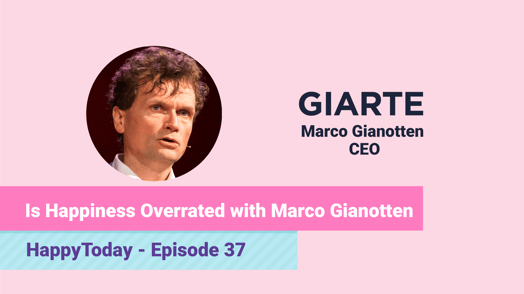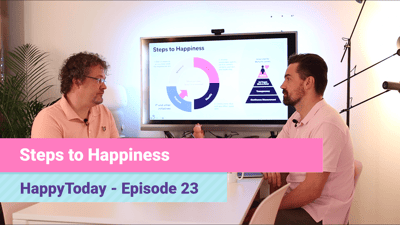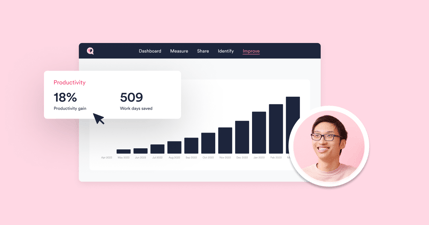Happiness - a term that can be imagined as something very fluffy. However, it is also a term that grows increasingly important everyday to individuals and teams, and should be a term that is taken with seriously by CIOs, IT directors and IT service management.
Why? Because when your end-users are happier, they are more productive. When productivity levels are higher, the business will create greater value. And with more value being produced, more revenue can be made.
More than an Outcome
Happiness is usually delivered as an outcome, for example; implementing an automation tool to help end-users access information quicker, to make them happier with the IT service.
However, Marco raises a point of happiness being a continuous experience instead of just an outcome. Your end-users will have higher levels of happiness and productivity if they experience happiness over-time instead of at one time.
When a consumer has a happy experience with a provider they may use that provider again. However, if that same consumer has a continuous happy experience overtime, they will stay loyal to that brand/organisation, recommend it to others and make repeat/increased purchases.
This consumerism idea also works internally. If your end-users are experiencing a continuous happy experience, they will be more productive as their jobs will become more enjoyable and workflows simplified. Your end-users will essentially want to consume more services you are providing.
This will then produce business value, as well as recognition for IT on the great service it is providing for the company.
Impact Culture through Experience
A continuous happy experience, where your end-users are happy with new and possibly innovative services, will open opportunity to change within your culture. If employees are happy with services and how these services have positively impacted their workflows, they will be more open to adopting (consume) new services in the future.
Campari Group's CIO, Chris Woods, speaks further about bringing this consumer idea into the company as a driving factor for change in their culture. Watch it here.
Make happiness your way of thinking, that will lead you to finding what’s impacting your employee’s experience.
Value Horizon
Marco Gianotten created the Value Horizon, a way of mapping out how to create value for IT. This is done through three pillars; Output, Outcome and Business Impact:

Output tells the story of what you make and deliver, therefore the quality of the product or service you deliver. For example: Was the product or service reliable/scalable? Did the skill of our Service Desk Agents meet our end-users requirements?
Outcome tells the story of the customers problems you have solved, such as Happiness or time to market. Outcome is a vital sign of the performance improvement and all the new possibilities. The Outcome of your value is determined from the result of your Output. Therefore, if a bad experience has been delivered (output) then a negative output is likely to be attained.
The final pillar is the Business Impact. This tells the story of monetized performance goals. That's important for any business. Business Impact is created from the first two stages of the value horizon.
Looking at an example: if your output was having high quality skills from your Service Desk Agents, your output could be an increase in happiness of end-users are there IT incidents were resolved efficiently. This has led to an increase in end-user productivity as they are able to continue doing their jobs and not slowed down by IT problems or bad service. The Business Impact here has been an increase in profit due to end-users having high levels of productivity.
Free giveaway: Digital Empathy - When Tech Meets Touch
Marco Gianotten and
Giarte have created a free e-book called Digital Empathy, which touches on experience and is a first stepping stone to Experience Level Agreements (XLAs). In this e-book you will find tools and practices on how to improve IT experience.




